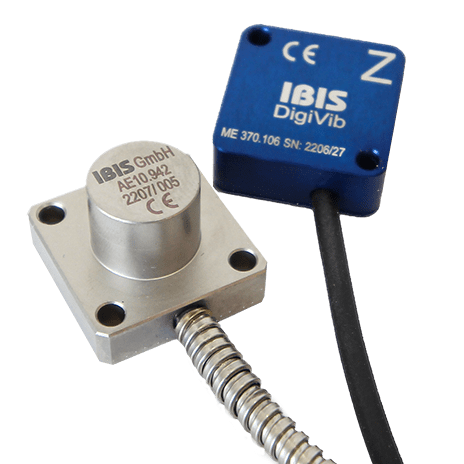Glossary » Acceleration sensor
Acceleration sensor
What does an accelerometer measure?
A Acceleration sensor Measures the change in speed of an object over time. It captures the linear acceleration along the X, Y and Z axes and thus enables the measurement of movements and vibrations in different directions.
The measured data is then Converted into electrical signals and can be used to control and monitor devices and systems, for example in the automotive industry, aviation, medical technology and mobile phone technology.

Function & structure of an acceleration sensor
An acceleration sensor is an electromechanical device that measures the Measures acceleration in a certain direction. The mode of operation is usually based on the principle of mass inertia.
In an acceleration sensor there is a small mass, supported by springs or webs and thus has freedom of movement in a certain direction. When the sensor is accelerated, a force on this mass and shifts it from their rest position. This displacement is converted into an electrical signal by an internal measuring device, such as a piezoresistive effect or a capacitance difference.
The electrical signal is then amplified and processed by internal circuits to be output as either an analogue or digital signal. This signal can then be further processed by an external system, such as a microcontroller.
The Accuracy and sensitivity The accuracy and sensitivity of an accelerometer depends on various factors, such as the type of mass movement, the dimensioning of the mass suspension and the quality of the internal measuring device. Modern accelerometers can be very precise and are used in a wide range of applications, such as in cars for vehicle dynamics control, in mobile phones for alignment detection or even in industrial plants for machine monitoring.
Accelerometers from Ibis
Discover our wide range of accelerometers for all applications and with various properties.Application areas of acceleration sensors in machines
1. vibration detection and monitoring
Accelerometers are used to measure vibrations in machines. Vibrations can indicate imbalances, bearing problems or other mechanical problems. By monitoring, machine breakdowns can be avoided and maintenance work can be planned.
2. alignment and inclination measurement
Accelerometers can be used to monitor the alignment of machines. They help ensure that machines are operating in the correct position, especially in applications where precision is critical.
3. condition monitoring and predictive maintenance
Accelerometers play an important role in the condition monitoring of machines. By continuously monitoring vibrations, engineers can analyse the condition of machines, detect wear and tear and plan maintenance work before failures occur (predictive maintenance).
4. release and control
Acceleration sensors are also used in machines to detect movements and trigger corresponding actions. This can be the case, for example, with tilt controls in construction machinery.
5. production optimisation
In the manufacturing industry, accelerometers help optimise the production process. By monitoring vibrations and movements, engineers can improve processes and increase efficiency.
